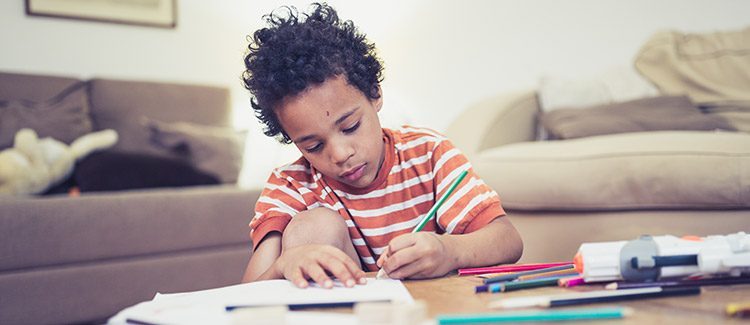This year, your child’s stories will amaze you, showing character development and dialogue. Your child’s opinion pieces and informational writing will be more organized. With this new writing prowess, your child will be using more sophisticated language and better grammar.
Building 3rd grade study skills
Third graders are expected to use books, websites, and other digital sources to do research projects and to build knowledge about different topics — both on their own and as part of group work with their peers. But there’s a new skill to learn this year: taking notes. Third graders need to start writing down what they learn from each source they use, keeping track of the source name and page so they are able to find it again, and then practice sorting any evidence they find into relevant categories.
3rd grade opinion pieces
Of course your child has an opinion — and here’s how they learn to share it in writing! Opinion pieces will likely start with your child reading a couple of books and responding to what they’ve learned. Your child should start their opinion piece by clearly introducing the topic, stating their opinion, and then giving multiple reasons to support their opinion. Kids should practice using linking words (e.g. because, therefore, since, for example) to connect their reasons to their opinion, and then end their writing with a conclusion.
3rd grade informative writing
The purpose of informative writing is to convey facts and ideas clearly. After introducing their topic, kids should group related information into a few clear, well thought-out points. They should develop these points using facts, definitions, and details and using linking words (e.g. also, another, and, more, but) to connect their ideas within each point. Your child can also include illustrations when they may help make or clarify a point. Finally, kids should end their work with a concluding sentence or two.
Can your 3rd grader write an informational essay?

3rd grade narrative writing
Narrative is just a fancy word for story — and this year your child’s stories will be much more complex. Using a narrator, characters, dialogue, and descriptive details, your third grader’s writing should show a story unfolding — including how the characters feel and respond to what happens. The sequence of events should be clear. Be sure not to let your child’s story simply stop by writing “The End”. Instead, the story should read like it’s coming to a close.
Check out this related worksheet:
• How to write a story
bttr, better, best!
Expect to see your child spending more time writing this year, whether it’s in the planning, writing, revising, or editing phase. While planning, your child may read or reread books on the topic, discuss their ideas aloud, brainstorm ideas, gather and organize information visually, jot down notes about the points they’ll make, and start to think about the structure of the piece. Once a first draft is in, the teacher or other students will go over it with your child. They’ll ask questions and suggest details or facts that could be added, clarified, or improved. Do the word choices convey what your child really meant? Is there an introduction and a conclusion? Are the story’s events in order? Using all these questions and suggestions as guidance, your child will do a revision, adding to, reordering, and improving the content. After one or more revisions, the teacher might help your child with the final edit — focusing on spelling and grammar, capitalizing proper nouns, ensuring nouns and verbs are in agreement, and checking that periods, commas, and quotation marks are used correctly. Following these steps — planning, writing a first draft, revising their work, and editing the final piece — teaches third graders that gathering information, organizing their thoughts, strengthening and clarifying their ideas, and improving grammar and presentation are all key to quality writing.
See what 3rd grade writing looks like

A red-letter year for grammar!
This year your child will learn the functions of nouns, pronouns, verbs, adjectives, and adverbs — and what role they play in a sentence. By year’s end, your child should be using regular and irregular verbs in simple past, present, and future tense (e.g. stopped/stop/will stop and knew/know/will know) — all while ensuring subject-verb agreement (e.g. I know/he knows). Your child should also use comparative adjectives and adverbs (e.g. big/bigger/biggest and quickly/quicker/quickest) and choose between them based on whether they’re modifying nouns (adjectives) or verbs (adverbs). In writing compound and complex sentences, your child will use conjunctions that show connection (e.g. and, or, but) and dependence (e.g. if, when, because).
Check out these related worksheets:
• Big, bigger, biggest
• Verb machine!
• 3rd grade spelling list #15: irregular plural nouns
Vocabulary
Third graders should use increasingly precise words. This means understanding root words (e.g. knowing that add is the root of addition and additional), choosing the right word from synonyms (e.g. knew, believed, suspected, heard, wondered), and using words to signal timing (e.g. after, then, later). With all this focus on word nuance, your child may need a thesaurus handy.
Related: Print this list of 3rd grade academic vocabulary words.
Check out these related worksheets:
• 3rd grade weekly spelling lists
• Prefix practice
• Writing practice: alternatives to “said”
And it’s live!
When the research is done — and the planning, writing, revisions, and edits are complete — the final step for some of your third grader’s writing is to publish the work. Your third grader should have some keyboarding skills by the end of the year. It’s a new level of independence and tech savvy. And while adults should be there to help out, your child should become comfortable taking the lead.
What about cursive?
Penmanship matters. Traditionally, third grade is when students learn cursive, so it’s a great idea to ask the teacher whether or not they’ll be learning cursive in class. If not, you may want to work on this skill with your child at home.
Updated August 2022





